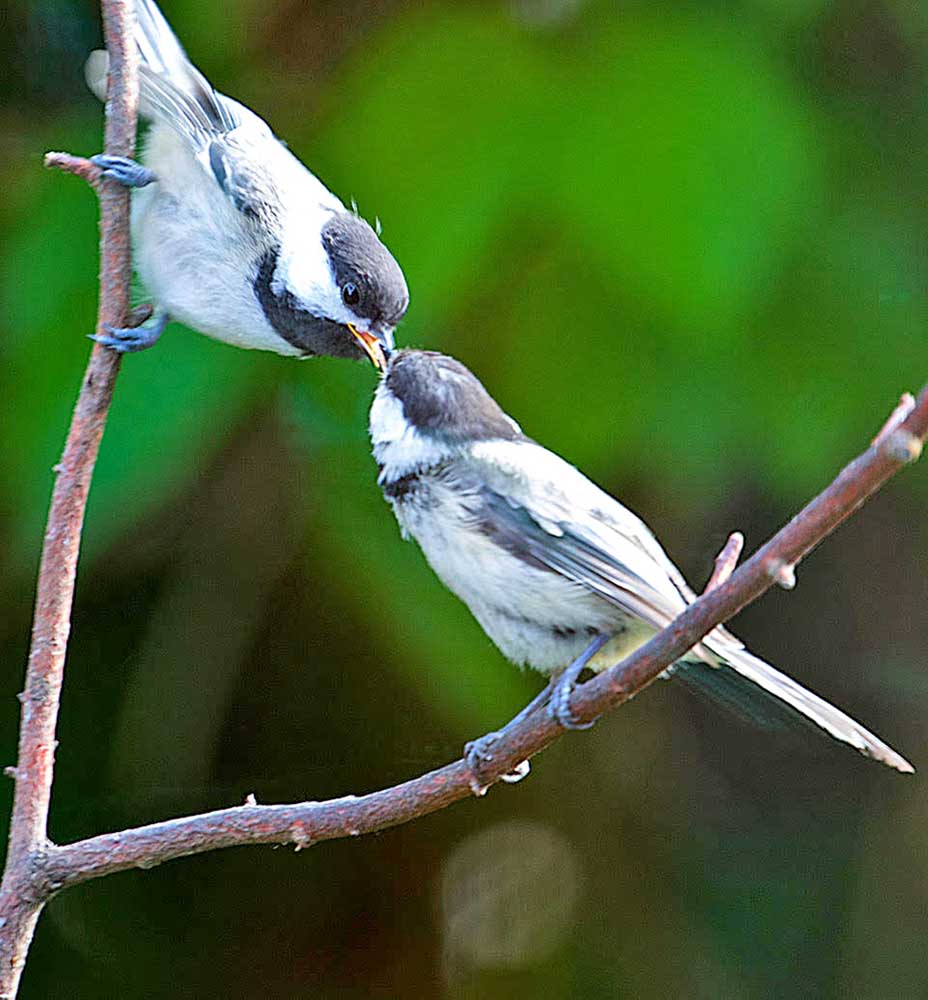Birding: Family life: The black-capped chickadee in action!
Published 3:34 pm Wednesday, July 17, 2019

- An adult black-capped chickadee, top, passes food to its nearly grown offspring.
A few weeks ago I wrote about the competition for the nesting box between the black-capped chickadee and the red-breasted nuthatch. After disappearing for a while to build a nest, lay eggs and raise their young, the black-capped chickadee parents appeared at the suet feeder with one offspring in tow one week ago.
The parents nibbled on the suet whenever they had an opportunity. They parked their baby just below the feeder on a bare twig. As soon as mama or papa chickadee secured a mouthful of tasty suet, it flew to the baby who waited patiently for every tiny morsel. Sometimes one parent did it all. Constantly feeding a baby chickadee must be exhausting! However, I think that two parents cooperated in their endeavor to keep their baby well fed. This scenario has been repeated every day since the family appeared together and is still happening as I write.
Baby chickadees look exactly like their parents. In general, black chickadees feast on insects, seeds and spiders, but in this case the family of chickadees spend the better part of an hour, every once in a while, throughout the day feasting on rendered beef suet mixed with peanuts and peanut butter. I wonder whether peanut butter suet cake is now considered a delicacy by this family? It wouldn’t be surprising because it is a great source of energy especially on cooler days and the frigid days of winter. The suet I am currently using is guaranteed to contain a combination of ingredients totaling 68% protein, fat, fiber and water. The other suet that I use is homemade by the Wild Bird Store and contains meal worms and insects. This gourmet meal is also enjoyed by chickadees and other suet eating birds, such as the downy woodpecker and the red-breasted nuthatch. Both of these suet delights are very popular so they disappear within the day or two, but this is okay because suet is relatively inexpensive to make or to purchase.
Speaking of the red-breasted nuthatch, it suddenly appeared this morning. There were no babies in tow, just a lone, male bird giving its typically nasal yank, yank, yank call. I wonder where its family is? Is the female red-breasted nuthatch still sitting on eggs or are both parents still feeding their nestlings? So many questions! The answers will come with observation.
It is time to be vigilant if one wants to learn about bird family behavior. Watching for parents and their young traveling together allows us to gain more knowledge about our feathered friends, and of course it is extremely entertaining to watch bird family antics.









